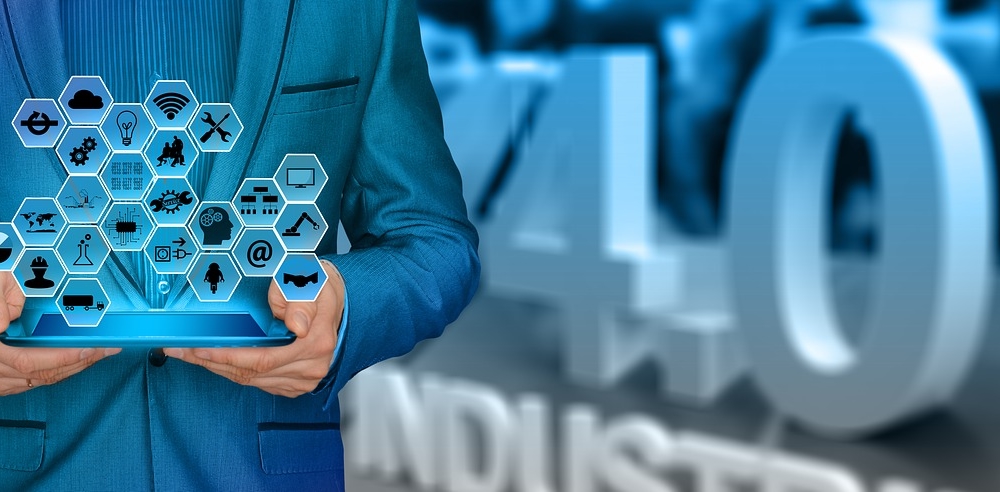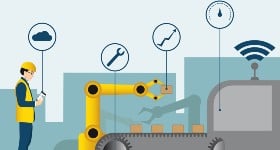
We are in the midst of a silent industrial revolution, bigger than the steam engine. Everything about your world is about to become connected to a sensor, without you knowing it. Your location, your heartbeat, everything are all visible through an infrastructure that is already in place. And with all this data, the next industrial revolution is already happening.
Industrial Revolutions tend to be marked by two factors occurring at the same time in history: the capability for deeper instrumentation, combined with deeper processing capability. Whether you are a CEO or a scientist, you know that greater measuring ability combined with greater processing power tends to result in greater technological capability. During Industry 1.0, mechanization and steam power came about on the heels of the first microscopes and Charles Babbage's Analytical Engine, also known as the world’s first computer. During Industry 2.0, the mass production and the assembly line came concurrently with our understanding of radio technology and the invention of vacuum tubes. During Industry 3.0, automation came about along with the capability of electron microscopes and the solid state transistor.
This incremental innovative insight (triple-i) with each revolution arrived along with deeper sensing capability combined with increased processing power. Now, as part of Industry 4.0, Artificial Automation and smart factories are not only building the products of the future but innovating them in real-time. This real-time improvement comes from our ability to understand every aspect of the product's lifecycle, before a failure event happens. Historically, if a person wanted to improve or understand how to fix a system, they had to wait until the machine completely failed in order to take it apart and study it. Babbage’s first computer failed because moths flew into it and got stuck in the gears, hence the term “bug”. Iterations of industrial improvement will move from being the length of an entire manufacturing cycle, to being much shorter. We can now, non-invasively, debug computer programs without turning them off, and treat people with cancer before they die. What we are seeing is a reduction the length of the scale of “incremental innovative insight” from the full life-time of the device or person, to studying that system while they are still active in their lifecycle.
That is why "synthetic sensing" is the biggest thing you haven’t yet heard of. So what is a “synthetic sensor?” A synthetic sensor is a device that uses its existing hardware to give you different types of data. For example, let’s say you wanted to measure the size of a room. If the lights in the room are on, then you can use a measuring tape or try to estimate visually how large the room is. However, what if the room is dark? If you couldn’t use your eyes, you might try yelling and estimating the size of the room based on the echo. In that moment your voice, echo and ears, are acting as a “synthetic sensor”. They are a non-invasive and alternative-technology helping us to better sense and understand the world around us.
We are currently surrounded by untuned synthetic sensors, however, that is quickly going to change. Professor Dina Katabi from the Massachusetts Institute of Technology has discovered how to use the signal of a regular Wireless Router, the kind that we all get our Wi-fi from, as a synthetic sensor to measure everything from a person's position in the room to their heartbeat. Gierad Laput at Carnegie Mellon University has achieved similar results. This awareness of vibrations can be applied everywhere: from measuring car engines while they are sitting at a red-light in traffic, to seeing if a patient is having heart issues without connecting them to an ECG machine. Someday, synthetic sensors may even be able to have the same resolution as MRI machines do now, so the cancer screenings of the future might actually happen each time you log into your wireless network, and not waiting until you visit an oncologist.
In subsequent articles, we will discuss how this is going to revolutionize not only how we improve objective measures of performance, like engine efficiency, but also how we experience the world. Agriculture is already using big-data and IoT technology to improve crop yields and flavor preferences. The newly legalized cannabis industry is in prime position to capitalize on this. Synthetic sensing data about the plant’s size can be combined with synthetic sensing data about the experience someone receives after consumption, potentially connecting factors never able to be understood before. Digital twin technology is helping us to create digital renditions of a machine and model their lifecycle, so we can get a better understanding of how they might fail. Synthetic sensors means that we can generate a digital twin of just about anything, just by using the existing sensing infrastructure. A world of digital twins, informed by synthetic sensors, is the starting point for Industrial Revolution 4.0.
 About the author: Nima Veiseh is a thought leader in the space of sustainability, data and distributed technology. He started his career in IoT 15 years ago while a researcher at MIT, and holds patents in the fields of IoT, data security, and sustainable infrastructure. He is currently the Director of IoT for Ekatra USA, and is on the advisory board of several firms, including CannabisBPO.
About the author: Nima Veiseh is a thought leader in the space of sustainability, data and distributed technology. He started his career in IoT 15 years ago while a researcher at MIT, and holds patents in the fields of IoT, data security, and sustainable infrastructure. He is currently the Director of IoT for Ekatra USA, and is on the advisory board of several firms, including CannabisBPO.
Edited by
Ken Briodagh





